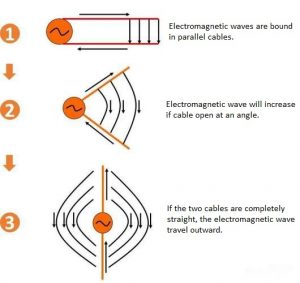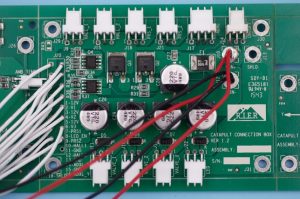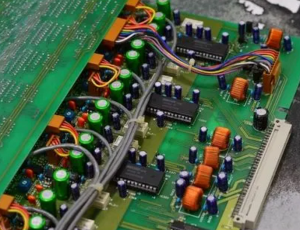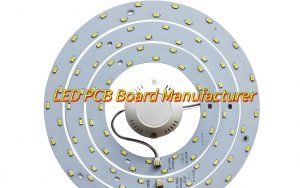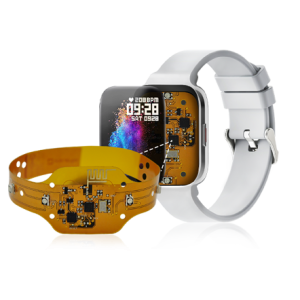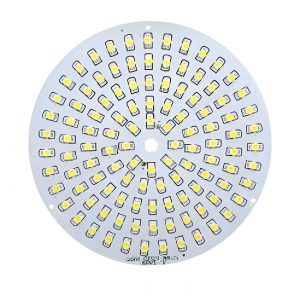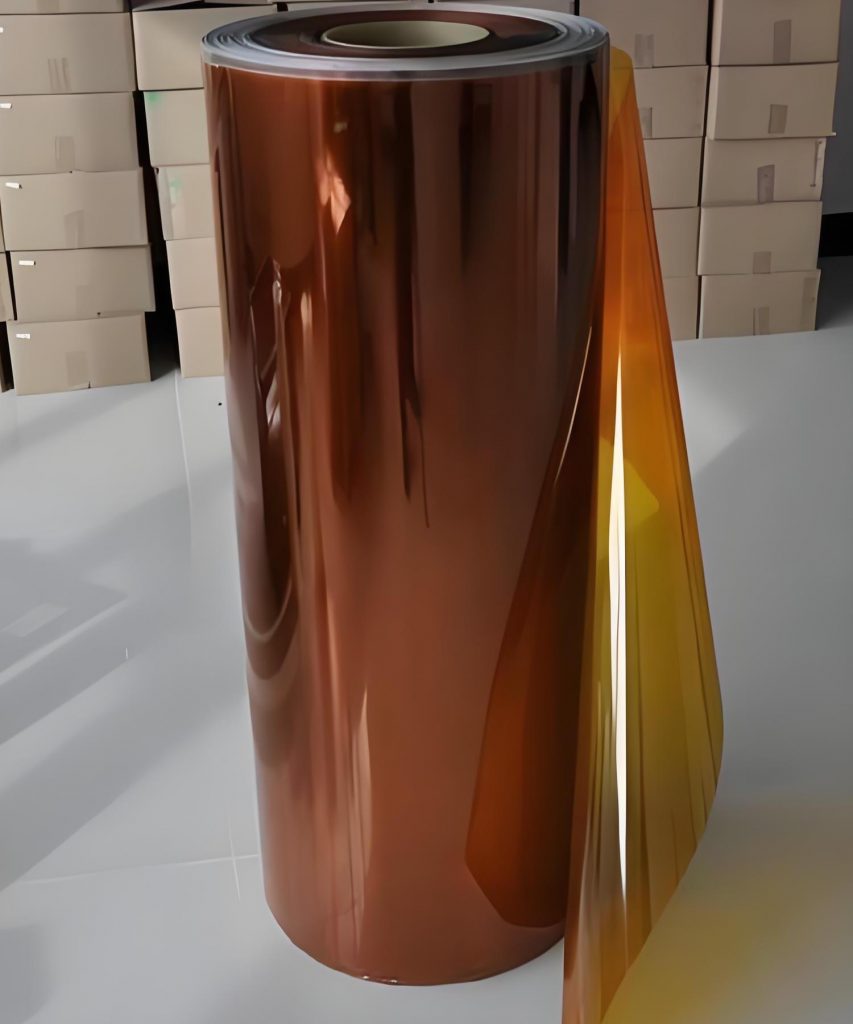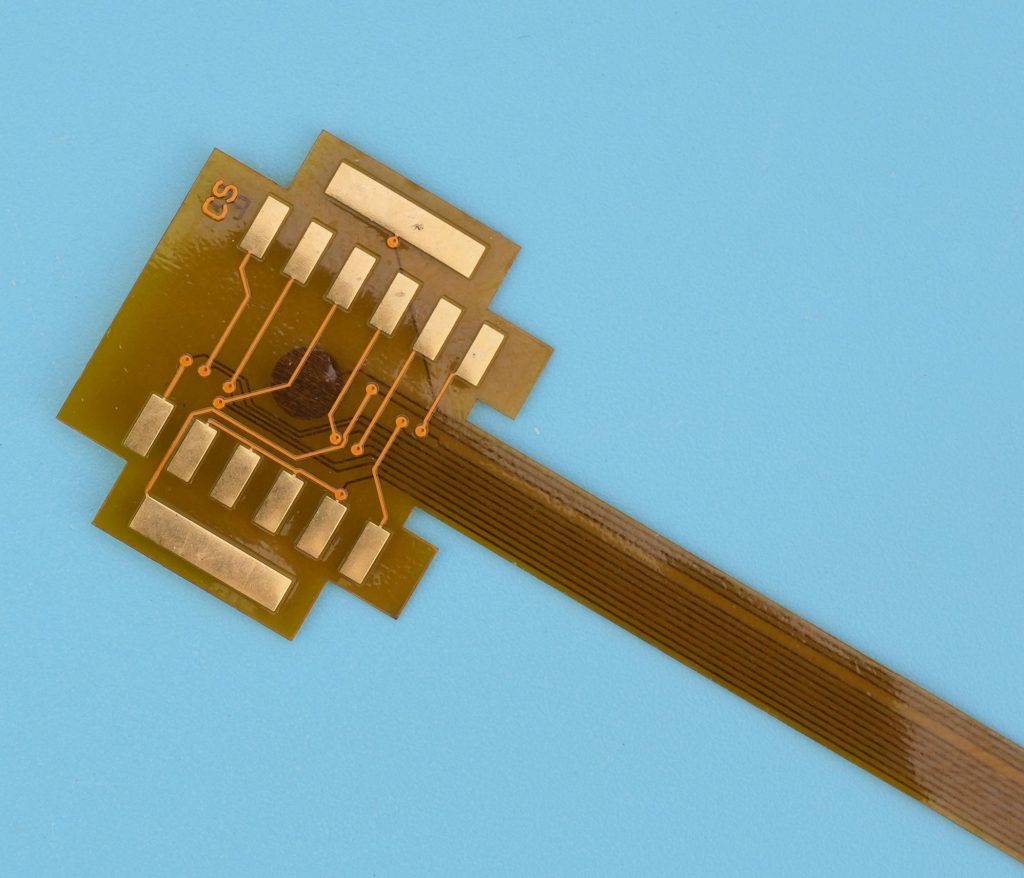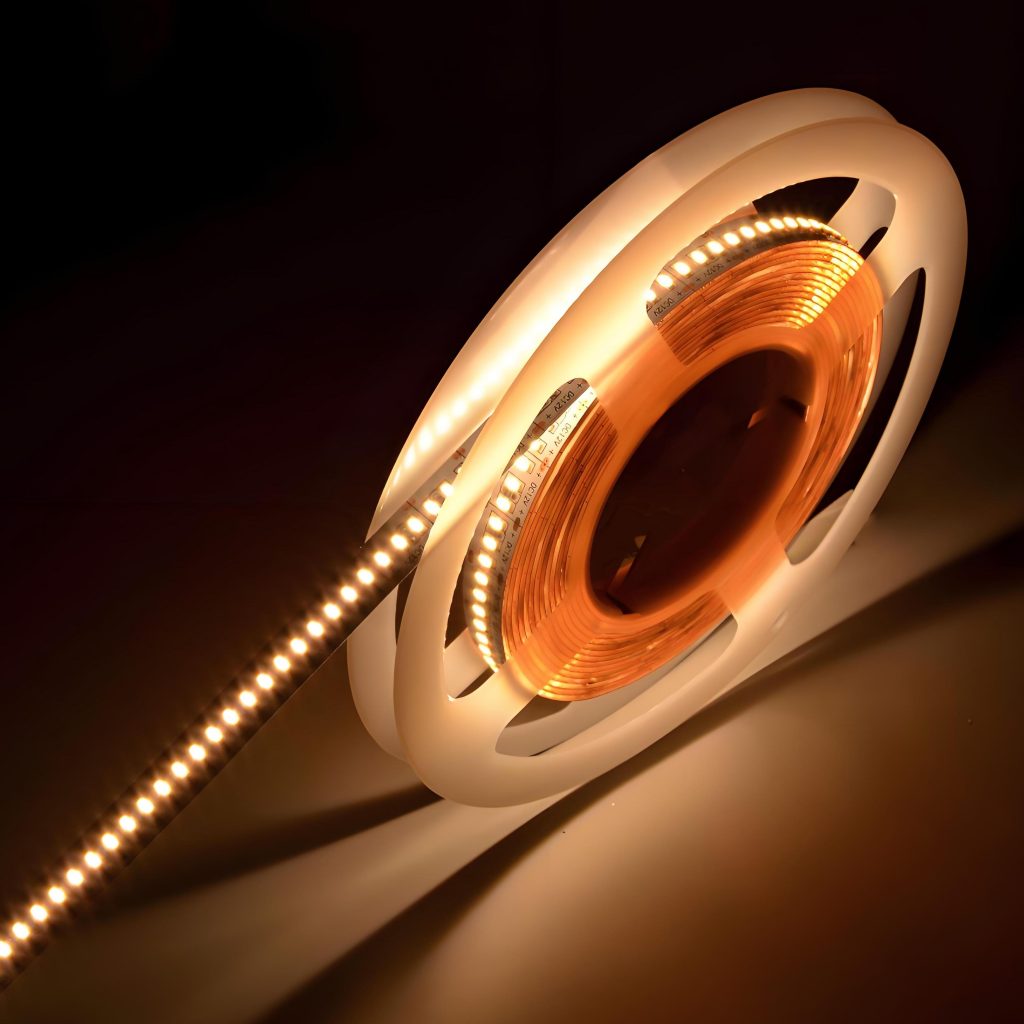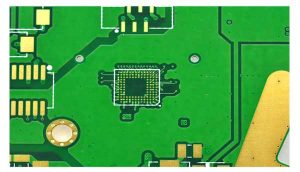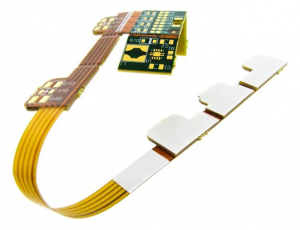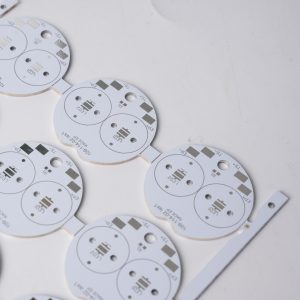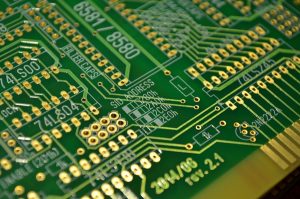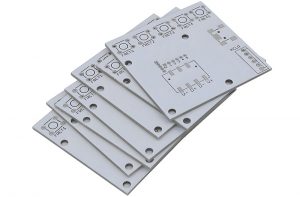Flex PCB LED solutions keep expanding across industries as demand rises for products with creative shapes and compact structures. From automotive interiors to medical devices, these flexible boards blend functionality with space-saving benefits.
In this article, weāll dive into what flex PCB LED means, explore its advantages, and share practical design and manufacturing processes. Whether you design products or source materials, this blog will help you understand why flex PCB LED continues to attract attention.
What is A Flex PCB LED?
A flex PCB LED is a thin, flexible circuit board designed to hold LED components while allowing the entire board to bend, twist, or fold during use. Unlike rigid PCBs, these boards are made from materials that stay reliable even after repeated bending.
Most flex PCB LED designs use polyimide or other flexible substrates that support surface-mount LEDs and small passive parts. These materials combine electrical performance with mechanical strength, helping the board withstand vibration and constant flexing without damage.
This flexibility helps designers install LED circuits into curved surfaces, folded product areas, or spaces too tight for traditional rigid boards. From flexible light strips to thin wearable screens, flex PCB LED technology supports creative designs while keeping circuits stable.

If your project need to be designed and produced, please feel free to contact Best Technology sales@bestpcbs.com. We devoted to provide you professional one stop flex pcb led solution and PCBA Service with competitive price and fast delivery, because we are equipped with advanced production and testing machines, and our engineer and production teams all have over 18 years of working experience in pcb industry. Looking forward to working with your project soon!
What Are the Advantages of a Flexible PCB?
- Flexible adaptability
With a bend radius of less than 1mm, it adapts to curved and irregular spaces, supporting dynamic three-dimensional bending in space (such as foldable screens, wearable devices).
- Lightweight design
Thickness less than 1mm, light weight, space saving and improved portability, suitable for mobile phone backlighting, car interior and other scenarios.
- High reliability
High temperature resistance (the PI substrate can withstand temperatures above 260Ā°C), strong vibration resistance, dynamic bending life exceeding one million times, suitable for harsh environments such as mechanical arms and automobiles.
- Integration and Precision Supports
Multi-layer circuit stacking, capable of integrating drive modules or sensors; high precision copper wires ensure stable signal transmission, suitable for high-density wiring requirements (such as medical endoscopes). Thermal Dissipation and Safety Excellent thermal conductivity reduces component thermal damage; overall wire connections reduce assembly errors, enhancing system reliability.

What Are the Disadvantages of a Flexible PCB?
- Higher Cost
Due to the use of polyimide substrates and precision etching processes, the production cost is significantly higher than that of traditional rigid boards.
- Difficult to Repair
If the lines are damaged after bending on a flexible substrate, it is difficult to repair locally and usually requires a complete replacement.
- Complex Design
It is necessary to reserve stress relief areas to avoid line fractures at the bend; special processes are required for connecting the soft and hard parts, which increases the development cycle. Installation
- Restrictions
Sharp bends or excessive stretching should be avoided to prevent delamination of the substrate or fracture of the copper foil.
- Limited Application Scenarios
High costs and process limitations make them more suitable for high-value-added fields (such as aerospace and high-end consumer electronics), making it difficult to popularize in the low-end market.
What Are the Different Types of Flex LED PCB?
Single-sided flex LED PCBs have just one conductive layer, perfect for simple circuits with basic LED arrays. These boards work well for backlighting, light strips, or decorative LED products.
Double-sided versions add a second conductive layer, helping designers create more complex LED circuits in the same flexible space. These boards suit products where LEDs need more control, like tunable lighting or segmented displays.
Multi-layer designs stack several conductive layers, allowing advanced routing and high-density LED layouts. These boards support smart lighting, automotive displays, or complex wearables where space-saving matters.
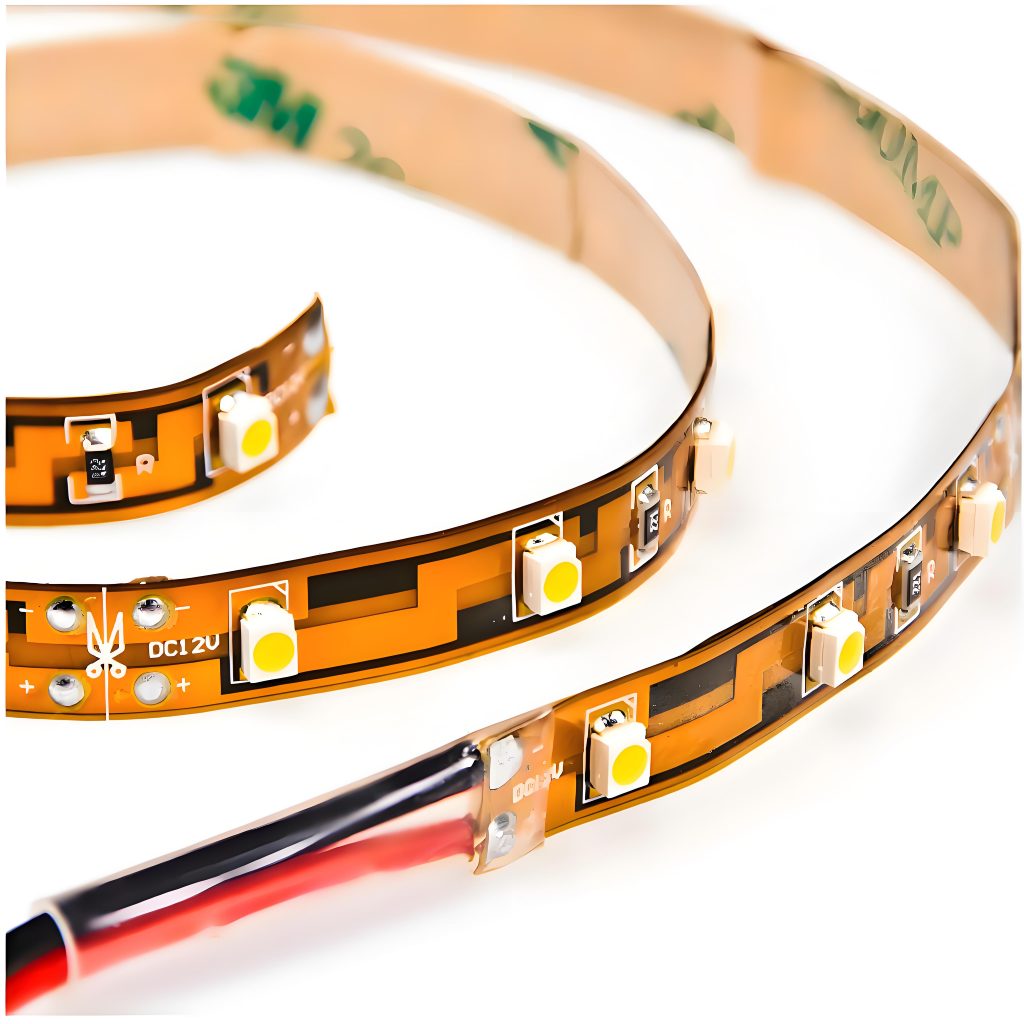
What Is the Difference Between Flex and Non-Flex PCB?
- Material
Flex PCBs use polyimide, PET, or other bendable substrates, while non-flex PCBs use fiberglass (FR4) or other rigid materials. Flexible materials let the board bend without cracking.
- Thickness
Flexible boards run thinner than rigid boards, especially in wearable or lightweight designs. Rigid boards tend to be thicker for strength and easier handling.
- Applications
Flex PCBs often serve in curved lighting strips, medical devices, or foldable gadgets. Non-flex PCBs dominate in flat devices like TVs, computers and so on.
- Assembly
Rigid PCBs handle easier during assembly since they keep their shape. Flexible boards need extra care to avoid creases or trace damage. However, when correctly handled, flex PCB LED boards work just as well.
What Are the Manufacturing Processes of Flex PCB?
1. Material preparation and pretreatment
- Substrate cutting
Cut the polyimide (PI) or polyester (PET) substrate into specific sizes according to design requirements. The thickness of the substrate is selected according to the application scenario (13Ī¼m for dynamic bending area and 25-50Ī¼m for static area.
- Drilling and hole metallization
Mechanical or laser drilling forms through holes for subsequent electrical connections; metallize the inner wall of the hole through chemical copper plating (PTH process) or electroplating process to ensure conductivity.
2. Circuit pattern production
- Dry film coating and exposure
On the surface of the substrate The surface is covered with a photosensitive dry film, and the circuit pattern is transferred to the dry film through ultraviolet exposure.
- āDevelopment and etchingā
Development removes the unexposed part of the dry film to expose the copper layer. Acidic or alkaline etching solution etches away the excess copper layer to form the target circuit.
- Demolding and surface cleaningā
Peel off the remaining dry film, and clean and activate the etched circuit.
3.ā Overlay and protective film processing
- Cover film lamination
Align the PI or PET covering film with the substrate, and the thickness of the covering film needs to match the bending requirements (bending area ā¤25Ī¼m).
- High temperature pressing
In a clean room environment, the cover film and the substrate are pressed together as a whole through high temperature (150-200ā) and high pressure (10-15MPa).
4. Surface treatment and functional enhancement
- ENIG
Deposit a nickel-gold layer (0.5-2Ī¼m nickel + 0.05Ī¼m gold) on the pad area to enhance solderability and corrosion resistance.
- Character printing
Print identification text or symbols in non-functional areas to facilitate subsequent assembly identification.
5. Functional testing and finished product processing
- Electrical testing
Test the circuit conductivity through a probe, Detect defects such as open circuit and short circuit.
- āAuxiliary material assembly
Add PI reinforcement sheet or steel sheet at the joint of connector or hard board to improve mechanical strength. Attach auxiliary materials such as adhesive tape and electromagnetic shielding film.
- Appearance cutting
Use mold stamping or laser cutting to divide the whole board into the final finished product size.
6. āFinal inspection and packaging
- Full inspection (FQC)
āPerform a comprehensive inspection of the appearance, size and electrical performance of the finished product to eliminate defective products.
- Packaging and storage
Store at low temperature (<10ā) after vacuum anti-static packaging to prevent moisture absorption or oxidation of the material.
What Are the Material of a Flex LED PCB?
- Substrate layer
Material type:
Polyimide (PI) film must be used in dynamic bending scenarios, which has a temperature resistance of more than 260Ā°C and a bending life of more than 500,000 times, and is suitable for high-reliability scenarios such as folding screens and wearable devices.
Polyester (PET) film can be used for low-cost static scenarios, but it has poor temperature resistance (<100Ā°C) and a bending life of less than 50,000 times.
Thickness selection:
The dynamic bending area requires a 13Ī¼m ultra-thin PI substrate to reduce stress concentration.
The static area can use a 50Ī¼m thick substrate to improve mechanical strength.
- Conductive layer
Copper foil type:
The dynamic bending area must use rolled copper foil (RA copper), which has excellent ductility (long bending life) and avoids fatigue fracture.
Static scenes can use electrolytic copper foil (ED copper) to reduce costs.
Copper thickness parametersā:
Conventional copper thickness is 18-35Ī¼mā.
High-frequency or high-densityĀ lines require ā9Ī¼m ultra-thin copper foilā to reduce signal lossā.
- Covering layer and protective film
āMaterial matchingā:
The covering film must be consistent with the substrate (such as PI substrate with PI covering film) to avoid delamination caused by differences in thermal expansion coefficientā.
Thickness controlā:
The thickness of the covering film in the bending area is ā¤25Ī¼m, and the non-bending area can be increased to 50Ī¼m for enhanced protectionā.
The adhesive layer needs to use āhigh-temperature curing epoxy resinā to support welding processes (such as reflow soldering)ā.
- Adhesives and Stiffener materials
āAdhesion performance:ā
A low-flow epoxy adhesive is required to ensure the interlayer bonding strength and prevent bending delaminationā.
Stiffener strategy:ā
PI stiffener sheets or steel sheets need to be added to the soft and hard joints to enhance mechanical supportā.
Dynamic structures such as sliding covers are recommended to use āglue-free electrolytic copperā (better ductility)ā.
- Adaptation to special scenarios
āHigh-frequency applications:
Polytetrafluoroethylene (PTFE) substrate is required to reduce dielectric loss.
Medical/wearable devices:
The cover film must have sweat-proof and chemical corrosion-resistant properties (such as medical-grade PI materials)
Surface treatment:
The pads in the dynamic bending area need to be plated with a thin nickel-gold layer (0.5-2Ī¼m nickel + 0.05Ī¼m gold) to prevent bending and cracking.
How to Design a Flexible PCB for LED?
1. Material selection and basic design
- Substrate selection
Polyimide (PI) substrate is preferred, as its high temperature resistance (above 260Ā°C) and bending resistance can meet dynamic bending requirementsā. If cost is sensitive and the temperature resistance requirement is low (<100Ā°C), PET film can be usedā.
- Conductive layer design
Rolled annealed copper is used instead of electrolytic copper foil to improve the fatigue resistance of the bending area. The copper thickness is recommended to be 18-35Ī¼mā.
- āCoating layer optimization
The covering film should be a polyimide protective film that matches the substrate. The thickness of the covering layer in the bending area is ā¤25Ī¼m to avoid cracking caused by bending stress concentrationā.
2. Key points of layout planning
- āComponent layout rules
All components such as LED lamp beads and driver ICs must be arranged in the hard board area or static bending area, and the distance from the soft-hard combination boundary is >1mmā48. It is forbidden to place components in dynamic bending areas (such as the joints of wearable devices), and PI reinforcement sheets should be added to improve mechanical strength when the bending radius is ā¤3mm. ā
- Power supply partition design
A star power supply topology is used, and the power line width is ā„0.3mm (1A current) to avoid voltage instability caused by impedance mutation due to bending.
3. Wiring process and structural optimization āLine direction controlā
The routing in the bending area must be perpendicular to the bending axis, and arc corners (radius ā„1.5 times the line width) are used instead of right-angle routing to reduce bending stress. ā
- Multi-layer board stacking strategy
Single-sided wiring is recommended for dynamic application scenarios, and double-sided wiring (with a 0.05mm PI adhesive layer in the middle) can be used for static scenarios, and the total thickness is controlled within 0.2mm.
- āTransition zone treatment
The soft and hard combination parts adopt a gradient line width design (line width change gradient ā¤20%), and add anchor points (Via-in-Pad) to prevent delamination.
4. Production process and test verification
- Etching precision control
The line tolerance needs to be ā¤Ā±10%, and the line spacing in the dynamic bending area must be ā„0.2mm to avoid short circuit caused by micro crack extensionā.
- Welding process selection
Use low-temperature solder paste (melting point 138ā) or conductive silver glue welding to reduce the damage of thermal stress to the flexible substrateā.
- Reliability test
Dynamic bending test: After 100,000 bends (radius 1mm/frequency 1Hz), the resistance change rate is ā¤5%ā.
Environmental test: Continuous operation for 500 hours under 85ā/85%RH conditions without performance degradationā.
5. Design tools and engineering implementation
- āEDA tool settings
Use the Rigid-Flex module of Altium Designer to divide the soft and hard areas by defining the dividing line, and set the bending radius parameters (recommended ā„3 times the board thickness).
- ā3D simulation verificationā
Simulate the bending state in software such as SolidWorks to check the component collision risk and line tensile deformation (allowable tensile rate ā¤ 0.5%).
Conclusion
To sum up, Flex PCB LED technology offers powerful benefits for modern electronics, supporting thin, lightweight, and creative lighting designs. These boards help engineers build curved, wearable, or space-saving products where rigid boards simply cannot fit.
With the right materials, careful design, and proper handling, flex PCB LED circuits bring both reliability and creative freedom to industries from automotive to medical. Whether you need simple lighting strips or complex LED arrays, flexible boards open new design possibilities.


